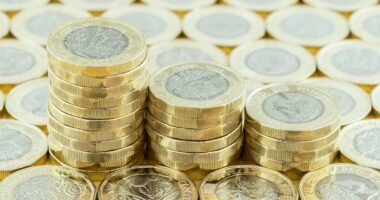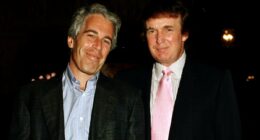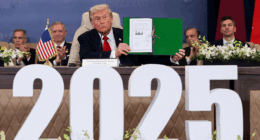Share this @internewscast.com
Stay informed with free updates
Wall Street stocks and the dollar tumbled amid mounting uncertainty over the US economy as President Donald Trump renewed his attacks on Federal Reserve chair Jay Powell.
US equities opened lower on Monday and the sell-off intensified as Trump took aim at the central banker. The S&P 500 was down 3 per cent during lunchtime trading in New York, while the tech-heavy Nasdaq Composite dropped 3.4 per cent.
In a post on his Truth Social platform on Monday morning shortly after the market open, Trump said Powell, whom he called “Mr Too Late”, should lower interest rates “NOW” to stimulate the economy.
The market moves came after Kevin Hassett, director of the National Economic Council, said on Friday that Trump would “continue to study” the matter of dismissing Powell after the president claimed the previous day that he had the right to fire the Fed chair.
Trump has repeatedly criticised Powell for not lowering interest rates sufficiently swiftly, while the Fed chair has said he will never be influenced by political pressure.
“If you think that it’s unacceptable for President Trump to be frustrated with the policy history of the Fed, then I think you . . . got some explaining to do,” Hassett told reporters in Washington on Friday, when US markets were closed.
The dollar fell as much as 1.5 per cent to a three-year low against a basket of its key trading partners on Monday, while the euro gained 1 per cent to $1.151 and the yen strengthened 1 per cent to ¥140.82 versus the dollar.
US sovereign debt remained weaker on the day, but had trimmed some of its earlier losses. The yield on the 10-year US Treasury was up 0.06 percentage points at 4.39 per cent after Trump’s latest social media post. Bond yields move inversely to prices.
Thierry Wizman, global foreign exchange and interest rate strategist at Macquarie, said the “flight from the dollar” on Monday was being driven by growing concerns over the Fed’s independence, as well as Washington’s lack of progress on trade deals.
He cited the “worsening” growth outlook in the fall in stocks, adding that the “willingness to rein in US consumer price inflation is ebbing, hence the flight to gold [and] the backup in long-term [Treasury] yields”.
Yujiro Goto, forex strategist at Nomura Securities, said the combination of bond sell-offs and currency depreciation at the same time was rare in a major reserve currency market such as the US.
Goto attributed the rise in the yen to concerns over US “stagflation” and “growing distrust in US asset credibility”.
Analysts at CICC, the Chinese investment bank, said in a report on Sunday that domestic US policy uncertainty was leading the dollar and Treasuries to “behave more like risk assets”.
They added that Trump’s recent remarks about Powell “further heightened market concerns about the Federal Reserve’s independence”.
The central bank has so far kept rates on hold this year after lowering them three times in 2024. Its next meeting is in May.
The Fed sets monetary policy independently of the other branches of government. Any attempt to oust Powell, whose term is scheduled to end in May 2026, or pressure monetary policy could cause further market turmoil in the US, according to investors and analysts.
Additional reporting by Cheng Leng in Hong Kong











